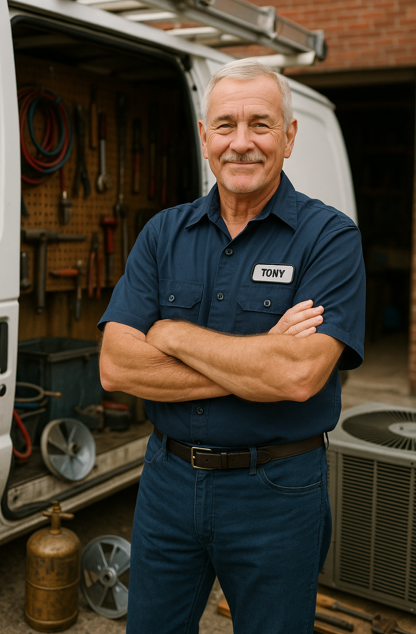If you’ve been shopping around for a new air conditioner lately, you’ve probably heard terms like variable speed and inverter thrown around a lot. What do they really mean? And should you be looking at a 3 ton variable speed air conditioner or a 4 ton variable speed air conditioner? Maybe you’re considering a 3 ton inverter air conditioner?
I’m Tony Marino — HVAC guy with 25 years under my tool belt — and I’m here to give you the plain truth about these systems, what makes them tick, and how to figure out what works best for your home.
What is a Variable-Speed Air Conditioner, Anyway?
Variable-speed ACs can adjust their compressor speed in real time, unlike older single-stage systems that just turn on or off. This means a 3 ton variable speed air conditioner doesn’t just blast full power until your house hits the target temperature — it ramps up and down smoothly to keep it steady and efficient.
Same idea applies to the bigger 4 ton variable speed air conditioner models, which just pack more cooling punch but work on the same principle.
If you want the nerdy breakdown of how variable-speed compressors boost efficiency and comfort, ENERGY STAR’s HVAC efficiency overview is a great resource. They explain how these units reduce energy use and keep your indoor environment steady.
How Does an Inverter Air Conditioner Differ?
The term “inverter” basically describes the technology inside the compressor that varies its speed. So when you hear 3 ton inverter air conditioner, think “variable speed compressor powered by inverter tech.”
These compressors are often quieter, more efficient, and better at humidity control because they can run at partial capacity instead of cycling fully on and off. Mitsubishi Electric has a fantastic write-up on inverter technology if you want a pro-level explanation.
Why Consider a 3 Ton vs. a 4 Ton Variable Speed AC?
Choosing the right size is all about matching your home’s cooling load. A 3 ton variable speed air conditioner is perfect for medium-sized homes — usually around 1,500 to 2,500 square feet depending on insulation, windows, and climate.
But if your house is bigger or has more heat gain, a 4 ton variable speed air conditioner might be necessary to keep you comfortable without running full tilt constantly.
Either way, getting the sizing right starts with a Manual J load calculation. Don’t just guess — ACCA, the leading HVAC trade association, offers detailed standards that pros follow to get this right.
The Upside: Efficiency, Comfort, and Quiet Operation
Variable speed and inverter-driven units have clear benefits:
-
Energy savings — They run at partial load, which means less power consumption overall. According to the U.S. Department of Energy, these units can use up to 30% less electricity than single-stage systems. You can read more about this on Energy.gov’s energy saver page.
-
More consistent indoor temperature — No more hot and cold swings.
-
Better humidity control — The longer run times remove excess moisture more effectively.
-
Quieter operation — Because they rarely run at full speed.
What About the Cost?
Yes, variable speed and inverter units cost more upfront. A typical 3 ton inverter air conditioner can run you $5,000 to $8,000 installed, whereas a comparable single-stage might be $3,000 to $5,000. The 4 ton variable speed air conditioner is pricier still, reflecting the bigger capacity and tech inside.
But remember: that higher initial investment often pays for itself in lower energy bills, fewer repairs, and a longer system life.
Future-Proof Your Investment with R-32 Refrigerant
If you’re buying new, make sure you get a system that uses R-32 refrigerant, which Goodman has already adopted in their highly rated 3 Ton 14.5 SEER2 R-32 Bundle. It’s more environmentally friendly than older R-410A and helps you comply with emerging regulations.
You can read the U.S. Environmental Protection Agency’s guidelines on refrigerants and phase-downs here.
Installation Matters More Than You Think
Even the best variable-speed or inverter system won’t deliver if it’s not installed right. Proper duct sizing, refrigerant charge, and airflow balancing are essential. That’s why it pays to hire a contractor who follows industry best practices like those from the Air Conditioning Contractors of America (ACCA).
My Bottom Line for You
Variable-speed and inverter air conditioners in the 3 and 4 ton range are game changers if you want efficiency, comfort, and reliability.
If your home’s cooling load is around 3 tons, a 3 ton variable speed air conditioner or a 3 ton inverter air conditioner is usually the sweet spot. For larger spaces or heavier cooling needs, step up to the 4 ton variable speed air conditioner.
And whatever you do, size it right and install it right — it’ll make all the difference.
Stay cool and smart,
Tony Marino







